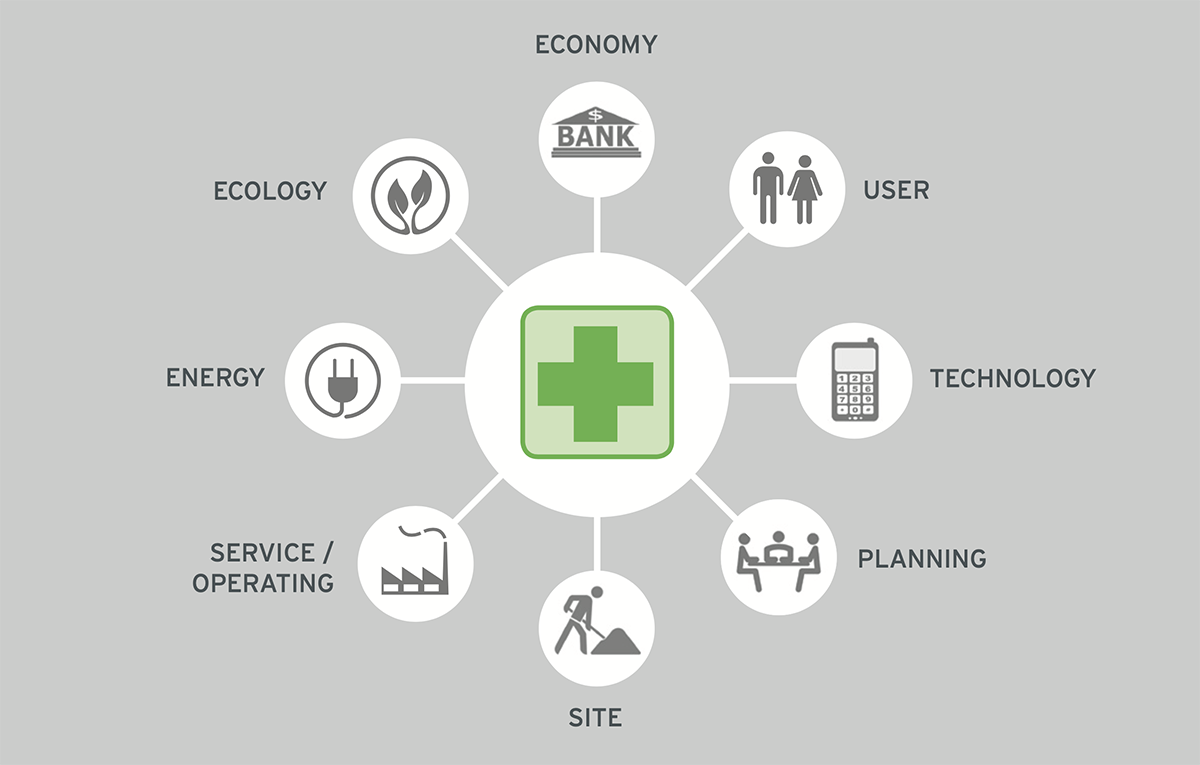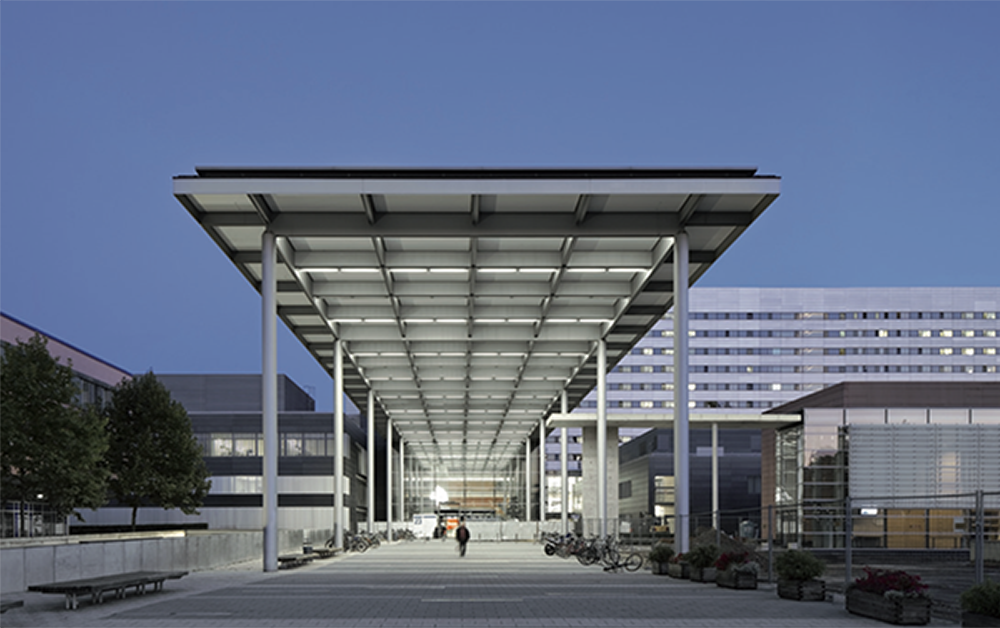
GHA and KfW present study on sustainable and energy-efficient hospitals: “GHA Green Hospital”
What does sustainable really mean? Hardly any term in politics, economics and the building industry receives as much inflationary use as sustainability. It enjoys a quite diverse range of definitions and it does not always seem clear to everyone what form its implementation should actually take. The recently published “Green Hospital Study” seeks to clarify this issue by getting to the heart of the term sustainability in hospital buildings. The aim of the study’s first phase is to produce a guide that can serve as a decision-making aid for new constructions and renovations to aging hospitals. The second phase focuses on the overall goal of transferring the findings to hospitals in developing and emerging countries. This was achieved by a case study at a hospital of primary care in China.The study was proposed and commissioned by KfW Bankengruppe and GHP The study was financed through funds from BMZ.
The Green Hospital Study was carried out by a trio that combined practical experience with scientific excellence: the companies Nickl & Partner Architekten AG and Iproplan Planungsgesellschaft mbH in cooperation with Technische Universität Berlin, represented by the Department of Hospital and Healthcare Building Design of the Architecture Institute.Consequently the team’s expertise lies within the specialised and highly complex field of design andconstruction of hospitals and energy efficiency, corresponding to the study’s goal to do nothing less than describe all significant criteria and technologies for the assessment of quality of sustainability and energy efficiency in hospital buildings in Germany and to transfer them to emerging and developing countries.
The team identified a wide range of measures of a very different nature helping to transfer a standard hospital into a “green” one, starting from the choice of the construction site up to the smallest details of the sunblind. It illustrates that energy efficiency and sustainability aspects are not only dependent on costly high-tech solutions although the refurbishment of the technical installations is an important backbone of the energy-efficient hospital. Upgrading the existing mechanical ventilation system with heat recovery for example can lead to 11 % of energy savings.

An investment that will be amortized in only 6 years. Good results can, however, also be achieved by very simple design decisions and low-tech measures such as careful planning of building proportions, orientation to natural light or the optimization of the window sizes. Even existing buildings bear high potentials to improve energy consumption and comfort for example by optimizing the facade constructions or by creating green areas which will influence the microclimate and ultimately the patients’ and staff’s well-being. Another conclusion is that each building with its technical equipment is just as good as its users. One recommendation is therefore regular training of the staff, a low-budget effort with convincing results.
The authors define the innovative character of the study in the goal of transferring the sustainability criteria to hospitals in developing countries and emerging economies, since circumstances in developing countries and emerging economies can vary enormously and climatic conditions often make a direct comparison with Germany impossible. The study aims to fill this gap in research by presenting a reasonably applicable guide for very diverse climatic zones. This distinguishes the “Green Hospital Study” significantly from the well-known certification systems such as LEED or DGNB.


